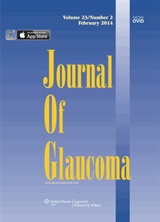Nel numero di febbraio del Journal of Glaucoma è comparso un interessante studio sull’efficacia e la sicurezza del trattamento SLT, a distanza di tanti anni dalla sua introduzione tra gli strumenti terapeutici per la cura del glaucoma.
Lo studio è stato condotto su 64 pazienti già in terapia mediante colliri ed ha dimostrato ancora una volta che questa metodica risulta efficace e sicura: in nessun soggetto seguito nello studio sono stati riportati effetti avversi o reazioni infiammatorie a carico dell’occhio, anche studiando con l’OCT ad alta definizione le possibili conseguenze patologiche a carico della retina.
Il valore medio della pressione era di 19.3 mmHg prima del trattamento SLT; a distanza di 24 ore dal trattamento si è ridotto a 12.9, a distanza di 14 giorni a 13.2, a distanza di 6 settimane a 14.1 e dopo 3 mesi si manteneva a 13.9.
Lo studio porta una nuova conferma sull’utilità e la sicurezza di questa metodica.
L’applicazione con SLT è semplice, ambulatoriale, priva di qualsiasi dolore e dura dai 3 ai 5 minuti. Con questo strumento si ottiene una riduzione dei colliri che il paziente deve somministrarsi ogni giorno e, in molti casi, anche la loro sospensione, consentendo un controllo ottimale della malattia senza farmaci.

Adverse Effects and Short-term Results After Selective Laser Trabeculoplasty
Klamann, Matthias K.J. MD; Maier, Anna-Karina B. MD; Gonnermann, Johannes MD; Ruokonen, Peter C. MD.
Journal of Glaucoma
February 2014 – Volume 23 – Issue 2 – p 105-108
Abstract To evaluate the risk of adverse effects and to demonstrate short-term results after selective laser trabeculoplasty (SLT) in glaucoma patients.
Methods Sixty-four eyes of 64 patients with primary open-angle glaucoma, not sufficiently treated with local antiglaucomatous therapy, were included in this prospective study. Intraocular pressure (IOP), anterior chamber cells, anterior chamber flare, and vitreous haze (according to the Standardization of Uveitis Nomenclature Working Group) were examined before SLT, for 24 hours, 14 days, 6 weeks, and 3 months after laser. Furthermore, macular thickness measurements in 9 Early Treatment Diabetic Retinopathy Study subfields, including central subfield, measured by Spectralis OCT were performed. The differences between prelaser and postlaser values were obtained.
Results The average of mean preoperative IOP measurement was 19.1±3.972 mm Hg compared with 12.9±2.513 (P<0.001), 13.2±3.331 (P<0.001), 14.1±2.731 (P<0.001), and 13.9±2.922 mm Hg (P<0.001) 24 hours, 14 days, 6 weeks, and 3 months post-SLT, respectively. The central subfield preoperatively was 278.14±74.355 µm compared with 277.14±71.461 (P=0.177), 277.14±71.461 (P=0.354), 287.34±74.363 (P=0.414), and 257.45±68.431 µm (P=0.214) 24 hours, 14 days, 6 weeks, and 3 months after treatment. Anterior chamber cells, anterior chamber flare, and vitreous haze were not denoted at any time of examination.
Conclusions In this study, no significant increase in macular thickness and no other adverse effects were present. Furthermore, SLT was found to significantly lower IOP in glaucoma patients in addition to local therapy. In conclusion, SLT has a good ability to reduce IOP with a minor risk of adverse effects.
